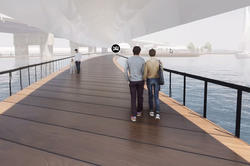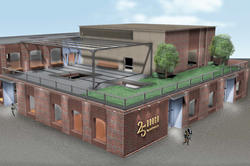RISD Interior Architecture students propose innovative designs for adding pedestrian and cycling lanes to the suspension bridge connecting Newport and Jamestown, RI.
RISD Interior Architecture Students Reimagine RI’s Pell Bridge

Students studying exhibition design in RISD’s Interior Architecture department are picking up where the Class of 2021 left off and using state-of-the-art technology to bring to life visions of a pedestrian- and bike-friendly Claiborne Pell Bridge. Headed up by Professor Liliane Wong and Assistant Professor Michael Grugl, the environmentally friendly Crossing the Pell installation has garnered backing from Bike Newport and government leaders like US Senators Jack Reed and Sheldon Whitehouse. And now that the state has received $82.5 million for retrofitting the bridge, the buzz that the project is generating may lead to real-world advances.
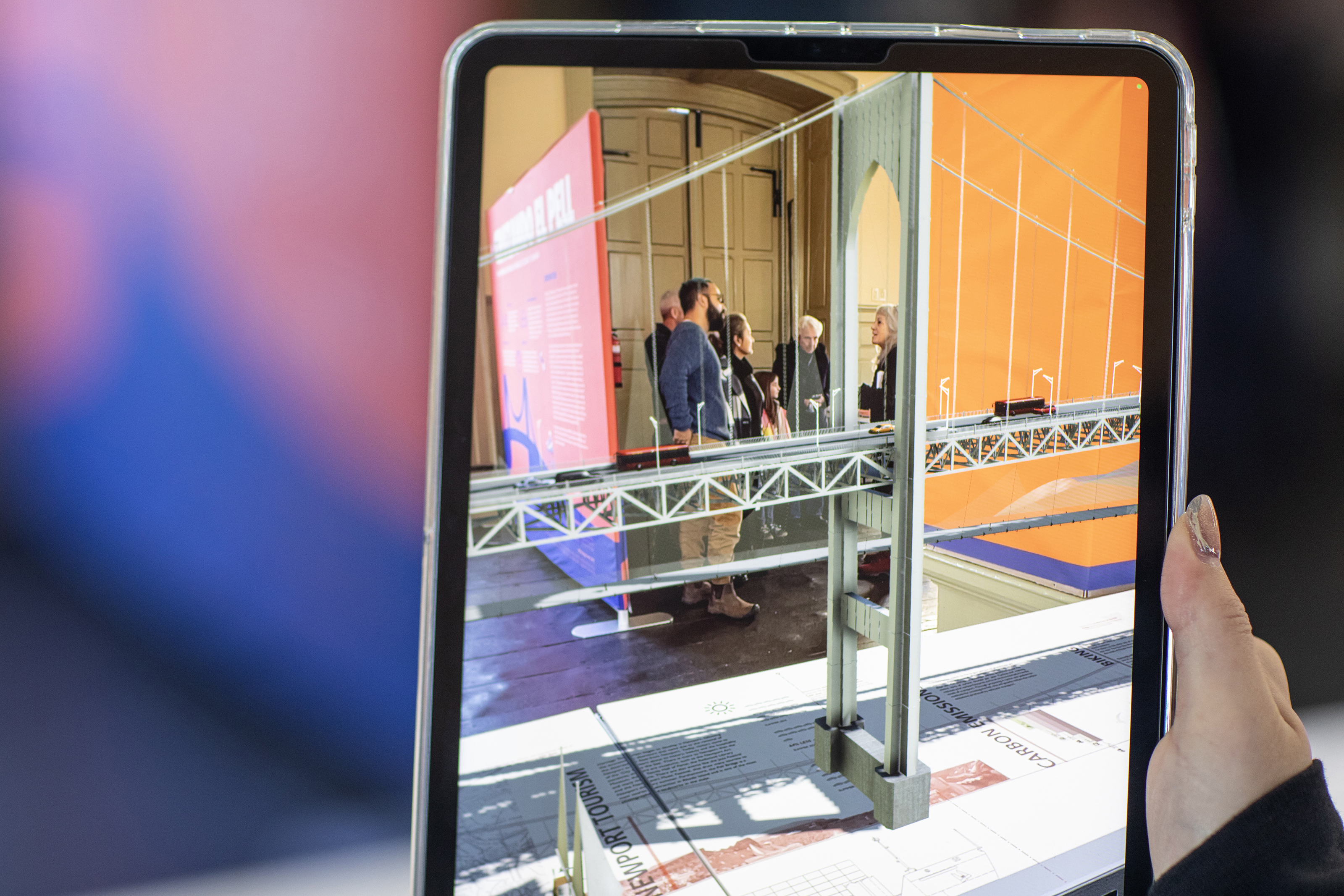
“It all began with an imaginative vision for the future,” says Grugl, “and one that answers three key questions: How can we creatively adapt our infrastructure for a more sustainable and inclusive future? How can we rethink mobility while supporting healthy activities such as cycling and walking? And how can we share architectural ideas to allow everyone to partake in future-oriented discourse?”
“Using virtual and augmented reality allowed us to offer visitors a peek into the inclusive future of the Pell Bridge.”
The third question was emphatically answered earlier this month at a public exhibition held at Newport’s Old Colony House in which visitors were invited to ride stationary bicycles or walk while wearing VR headsets that allowed them to experience what it would really feel like to cross the iconic, 2.1-mile span without a car. “Using virtual and augmented reality allowed us to offer visitors a peek into the inclusive future of the Pell Bridge,” says Victor Deng 22 IA, who helped add the applied technology to the designs.
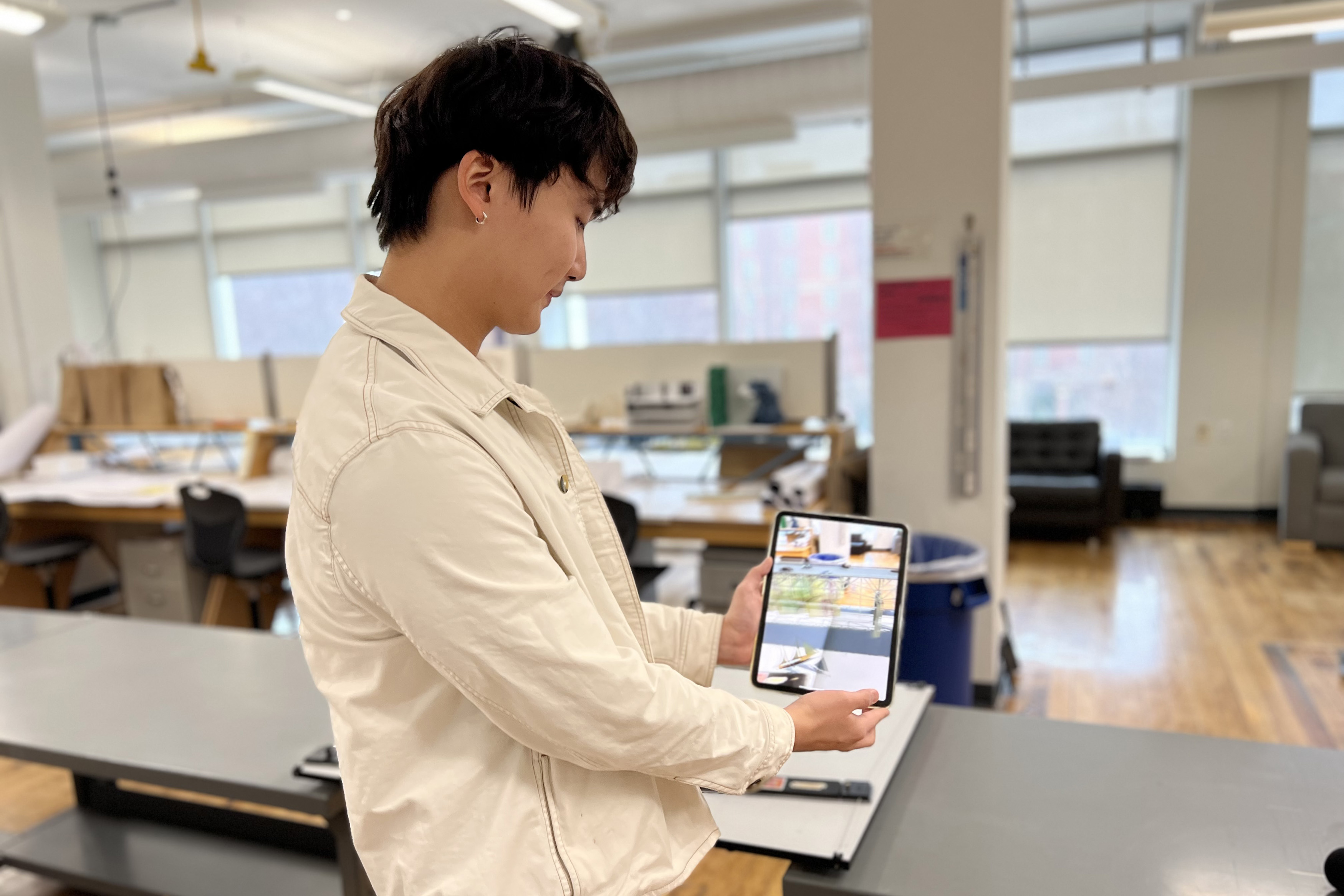
Bike Newport’s Bari Freeman describes the experience as “stunning and transformative” and adds that “putting on the headset really brings the students’ dreams into reality. This is what collaboration accomplishes,” she declared at the exhibition opening.
In addition to the green aspect of the project’s design, Crossing the Pell highlights social justice. It proposes rerouting access on the Newport side of the bridge, where the on-ramp currently divides the economically disadvantaged North End from more affluent areas of the city. “The construction of the Claiborne Pell Bridge in 1969 contributed to the development of Newport as a tourist destination,” Wong explains. “The influx of tourists and vehicles changed the historic city, creating economic and cultural divides.”
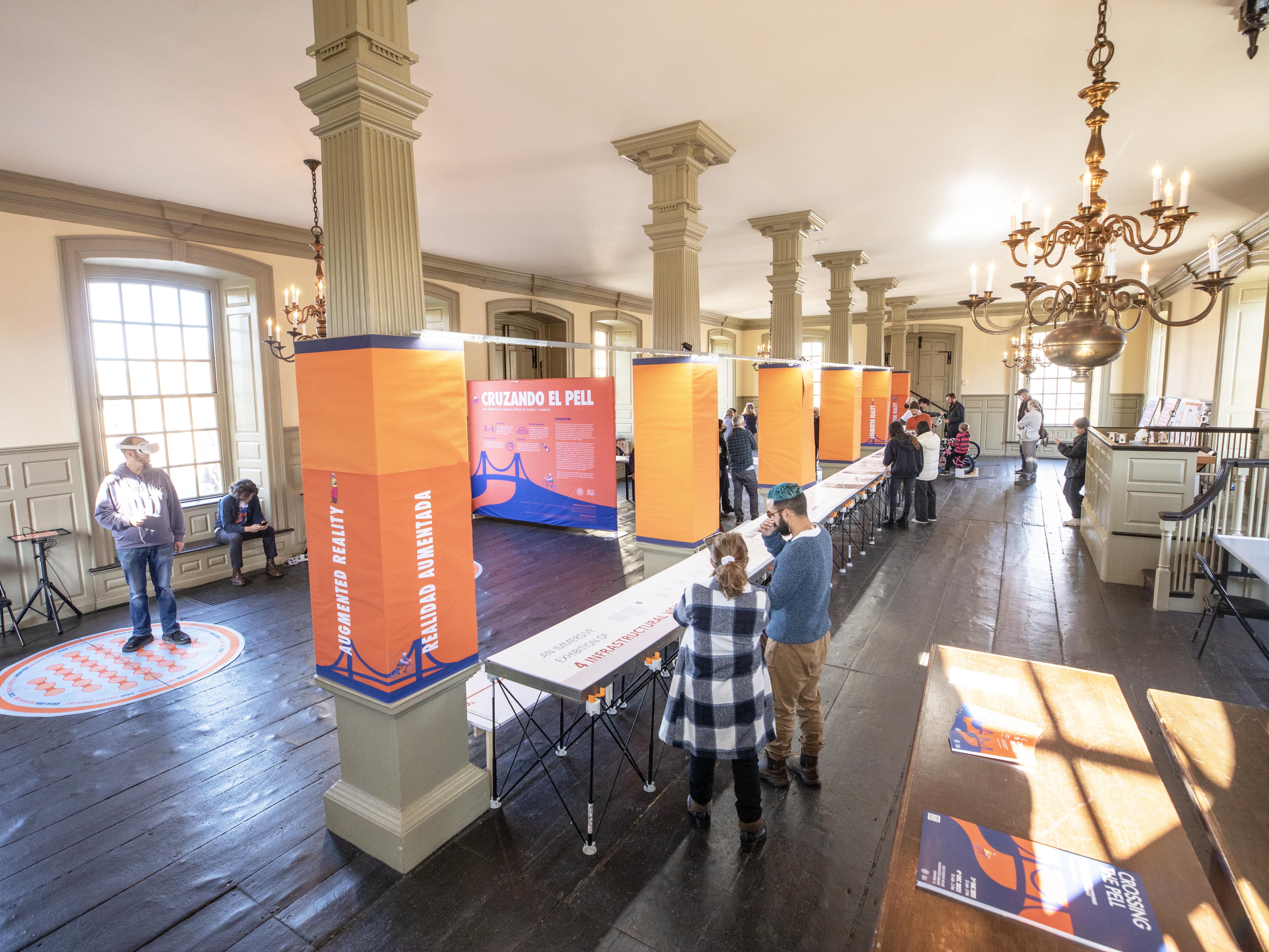
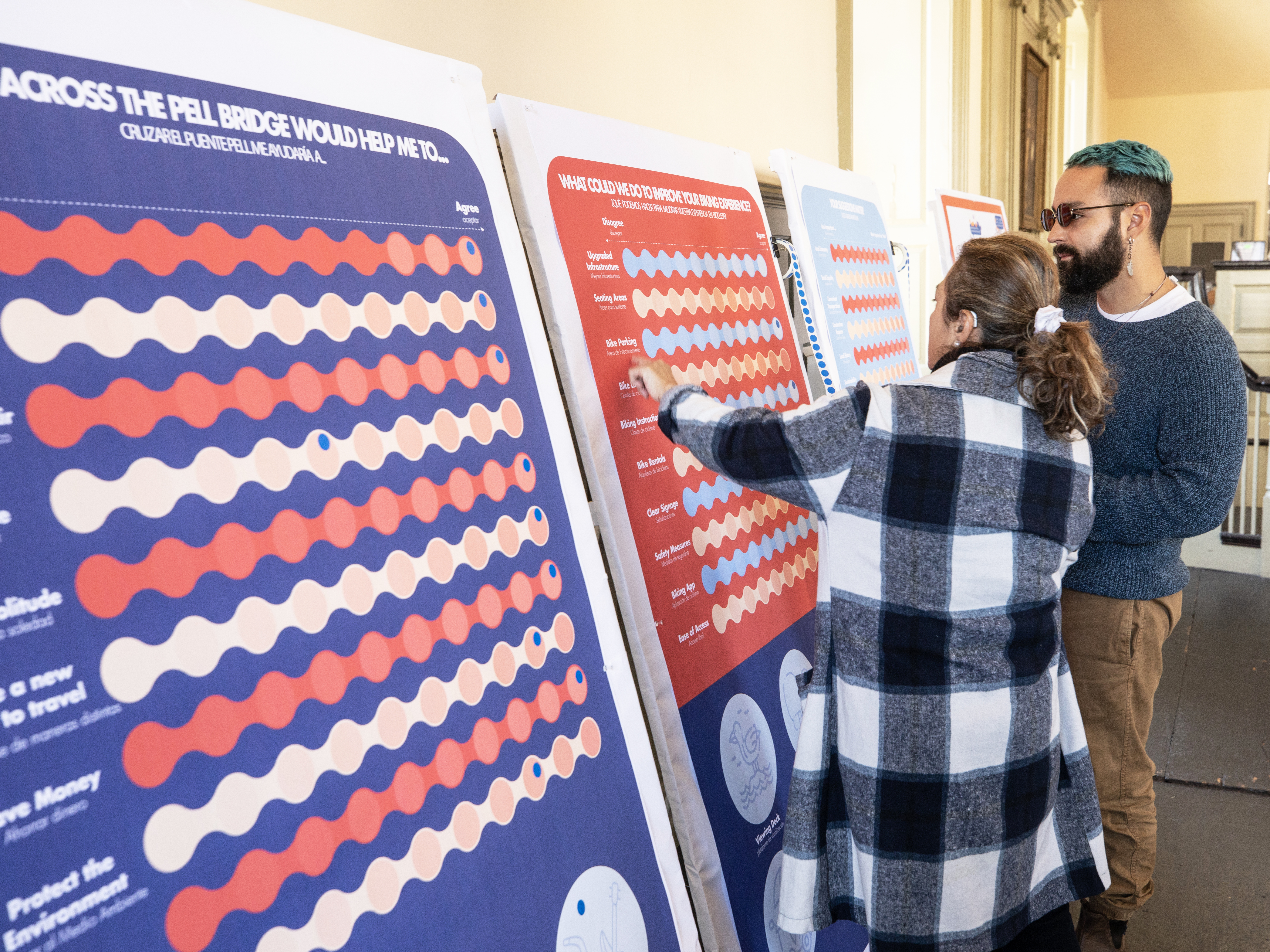
The original exhibition—presented in RISD’s Sol Koffler Graduate Student Gallery in August 2021—was created by graduate students focused on adaptive reuse, who developed stunning visions for adding a suspended lower level to the bridge that would allow for pedestrians and cyclists as well as arts venues, parks, cafes and even a floating fish market. Current students studying exhibition design have re-created it as a kind of traveling show, which accomplishes several of the program’s objectives.
“This is a great way for students to explore experiential exhibition design and how it differs from traditional exhibition design.”
“This is a great way for students to explore experiential exhibition design and how it differs from traditional exhibition design,” says Grugl. It also allows them to understand the use of new technologies and how to apply them to unusual exhibition venues like the Old Colony House, a brick Georgian-style building completed in 1741. The redesigned exhibition also features creative opportunities for visitors to offer feedback and share their own dreams for Rhode Island’s future.
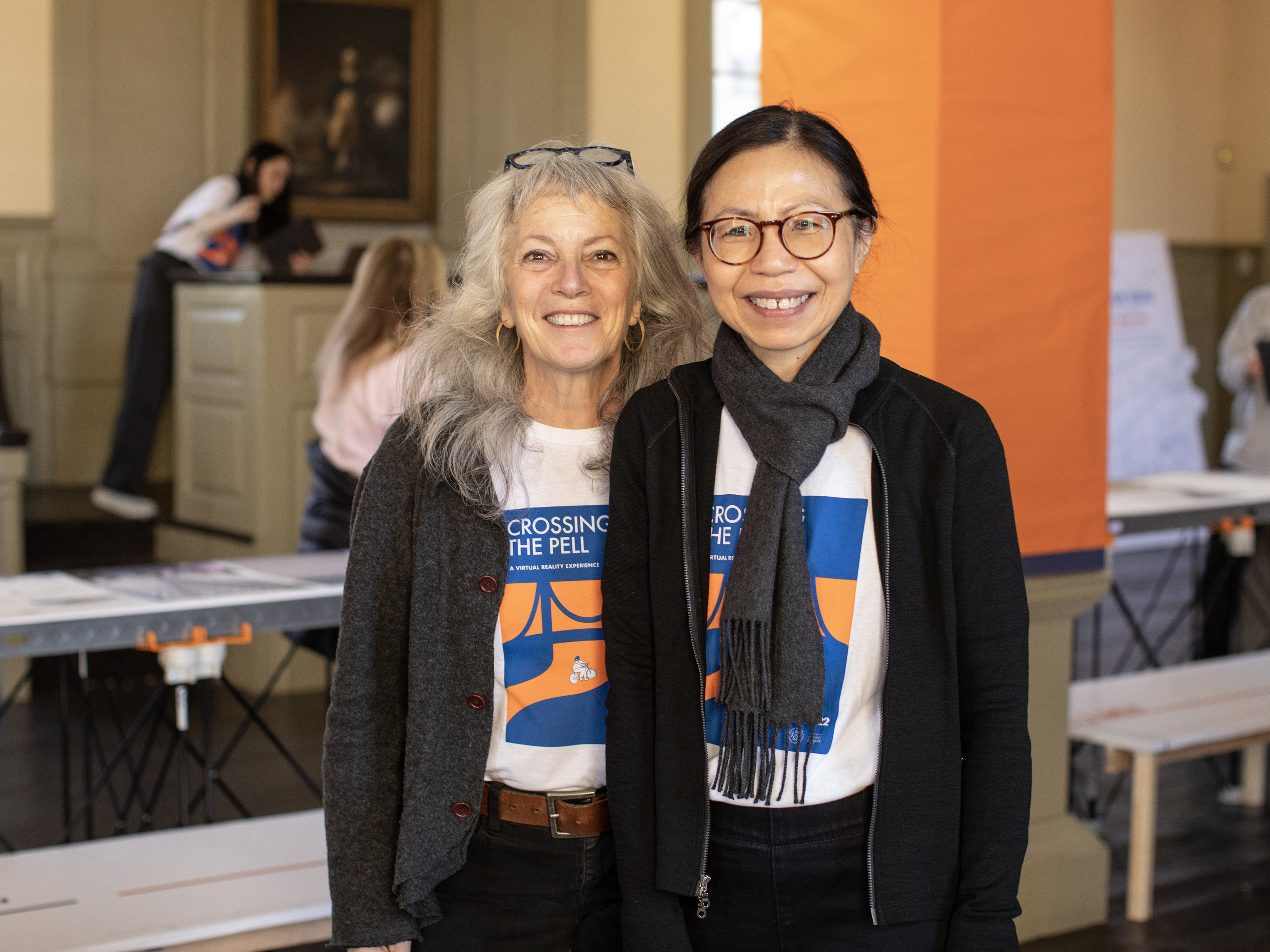
After the initial installation, the virtual reality stations will move to several satellite locations around Newport, including schools, community centers and the Newport Public Library. “We hope our project will encourage people to drive less frequently in the future with the help of improved infrastructure,” says student designer Jinlan Huang 22 IA.
—Simone Solondz / photos by Jo Sittenfeld MFA 08 PH
The installation and accompanying materials were made possible by generous support from the Champlin Foundation, the Bafflin Foundation, the Bazarsky Family Foundation and Reynolds deWalt Printing.
December 9, 2022
